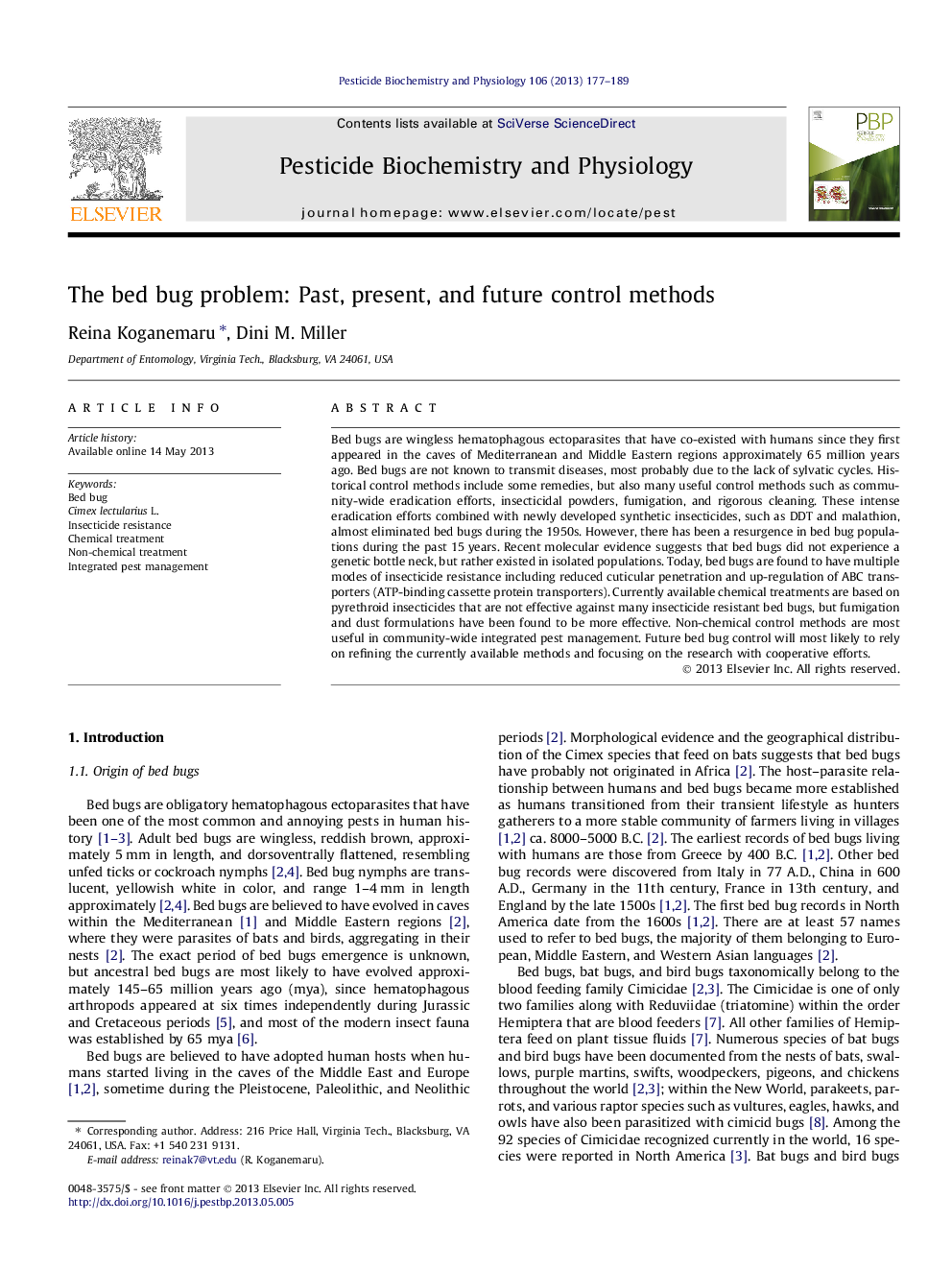| Article ID | Journal | Published Year | Pages | File Type |
|---|---|---|---|---|
| 2009362 | Pesticide Biochemistry and Physiology | 2013 | 13 Pages |
•Bed bugs are not known to transmit diseases.•Multiple mechanisms of the insecticide resistance are reported in recent studies.•Fumigation and dusts formulations are the most effective chemical controls.•Non-chemical control and IPM methods are mandatory for a successful bed bug control.•Future control efforts must rely on reformulation and research.
Bed bugs are wingless hematophagous ectoparasites that have co-existed with humans since they first appeared in the caves of Mediterranean and Middle Eastern regions approximately 65 million years ago. Bed bugs are not known to transmit diseases, most probably due to the lack of sylvatic cycles. Historical control methods include some remedies, but also many useful control methods such as community-wide eradication efforts, insecticidal powders, fumigation, and rigorous cleaning. These intense eradication efforts combined with newly developed synthetic insecticides, such as DDT and malathion, almost eliminated bed bugs during the 1950s. However, there has been a resurgence in bed bug populations during the past 15 years. Recent molecular evidence suggests that bed bugs did not experience a genetic bottle neck, but rather existed in isolated populations. Today, bed bugs are found to have multiple modes of insecticide resistance including reduced cuticular penetration and up-regulation of ABC transporters (ATP-binding cassette protein transporters). Currently available chemical treatments are based on pyrethroid insecticides that are not effective against many insecticide resistant bed bugs, but fumigation and dust formulations have been found to be more effective. Non-chemical control methods are most useful in community-wide integrated pest management. Future bed bug control will most likely to rely on refining the currently available methods and focusing on the research with cooperative efforts.
Graphical abstractPyrethroid-resistant bed bug adults, nymphs, eggs, exuvia, and fecal spots 6 h post feeding. Colony reared at Dodson Urban Pest Management Laboratory at Virginia Tech. Image taken by Koganemaru, R.Figure optionsDownload full-size imageDownload as PowerPoint slide
